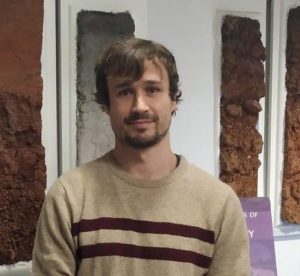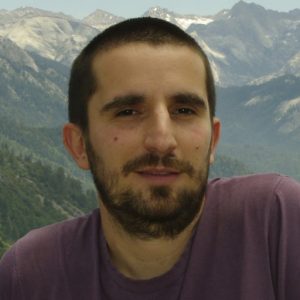 | Delphine de Brogniez
Delphine holds an MSc in Bio-engineering (Gembloux Agro-Bio Tech, University of Liège, Belgium) and an MSc in Soil management (Cranfield University, UK). Since 2010, Delphine is working as a young researcher in the SOIL team of the Joint Research Centre of the European Commission (Italy). She is currently doing her PhD with the Catholic University of Louvain, Belgium. Her PhD research project aims at studying the spatial distribution of topsoil organic carbon content at European scale, using digital soil mapping techniques. Delphine truly hopes that soil science will soon get the international recognition it deserves. |
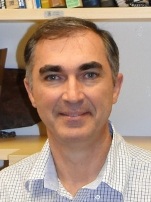 | José A.M. Demattê
José is a Professor at the University of São Paulo (College of Agriculture Luiz de Queiroz), Department of Soil Science. Graduated in agronomy (1990), master (1992), pHD (1995), Associate Professor (1999) and Associate 3 (2011), all in remote and proximal sensing applied to soils. He has over 25 years of experience in soil mapping in field and remote sensing techniques from ground to space platforms, multi and hyperspectral data. His research work includes soil mapping (traditional and digital), geoprocessing, remote sensing (laboratory, field, aerial and orbital), soil chemometrics, precision agriculture and soil management. |
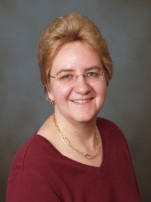 | Sabine Grunwald
Sabine Grunwald is Professor in the Soil and Water Science Department, University of Florida, Gainesville, Florida, U.S.A. Her research interests are in soil-landscape analysis, pedometrics, digital soil mapping, soil spectral sensing, ecosystem services and environmental impact assessment. She was awarded Research Foundation Professorship at the University of Florida (2010-2012) and has published 145 peer-reviewed international publications. She teaches several graduate level courses including Soil-Landscape Modeling and GIS in Land Resource Management. |
 | Gerard Heuvelink
Dr Gerard Heuvelink is associate professor in geostatistics with Wageningen University and senior researcher in pedometrics and digital soil mapping with ISRIC – World Soil Information. He has more than 25 years of experience in geostatistics, pedometrics and spatial uncertainty analysis. He is associate editor of the European Journal of Soil Science and Spatial Statistics and was the chair of the Pedometrics Commission from 2002 to 2006. |
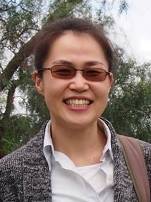 | Suk Young Hong
Suk Young Hong is a senior research scientist and head of the agro-environmental Information Lab, working at Climate Change and Agro-ecology Division, National Academy of Agricultural Science (NAAS), Rural Development Administration (RDA), South Korea since 1995. She is an agronomist with extensive experience for soil database , digital soil mapping, and soil information system of Korea. She also has a background of remote sensing for agricultural application on land cover classification, estimation of crop growth, and crop yield prediction. |
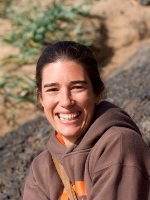 | Ana Horta
Ana Horta is a lecturer in Spatial Sciences at Charles Sturt University, Australia. Ana’s PhD work contributed to the field of soil science through the development of new geostatistical methodologies to evaluate soil quality. Her current research focuses on new spatial statistical approaches to be applied to spatial and temporal datasets, soil contamination, uncertainty assessment and data integration. More information: http://www.csu.edu.au/ses/staff/profiles/academic-staff/ana-horta |
 | Bas Kempen
Bas holds MSc degrees in Soil inventory & Land Evaluation and Geo-Information science & Remote Sensing from Wageningen University. He obtained his PhD from Wageningen University in 2011 with a thesis on digital soil mapping. Bas currently works for ISRIC - World Soil Information where he is in charge of the SOTER programme. His research interests are in using quantitative methods for updating soil maps and sampling for validation of (soil) maps. He lives in Wageningen, The Netherlands. |
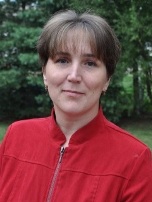 | Alexandra “Sasha” Kravchenko
Sasha is the Professor at Dept. of Crop and Soil Sciences, Michigan State University. Her interests are in studying soil spatial variability at scales from micro-aggregates to landscapes; teach statistical and geostatistical methods of data analyses; and provide statistical consulting. She also have specific interests in understanding the role of soil structure, including properties and internal characteristics of soil aggregates, on intra-aggregate water, air, heat, and carbon fluxes; and the role of the interactive influences of land use and management, soil properties and topography on carbon spatial variability across agricultural fields and landscapes. |
 | Philippe Lagacherie
Philippe trained as an Agronomist and completed his PhD in soil science in 1992. He obtained his senior scientist degree from Montpellier 2 University in 2002 for his researches on digital soil mapping methods. He is currently senior researcher at INRA Montpellier (France) and lead a research team of the LISAH research unit “spatial structures and dynamics of the cultivated landscapes”. Philippe’s research deals with Digital Soil Mapping, remote sensing and spatial modelling of cultivated landscapes. He is also interested in the crossroad of soil, agronomy and hydrology. |
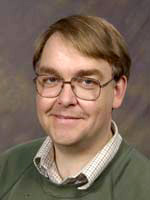 | Murray Lark
Murray is environmental statistician at the British Geological Survey. His research is on models for non-stationary and multiscale data, sampling optimization, stochastic geometry and effective ways to communicate understanding of uncertainty at different stages of the research chain. He collaborates with fellow soil scientists, geologists, geochemists and ecologists. Murray is Chair of the Informatics and Statistics subdivision of the Soil System Sciences Division of European Geosciences Union (EGU). |
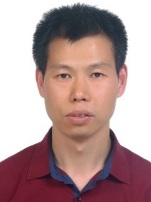 | Feng Liu
Feng Liu is an associate professor in soil geography, Department of Soil Resources and Remote Sensing Applications, Institute of Soil Science, Chinese Academy of Sciences, Nanjing, China. His work on soils started with his PhD thesis on predictive soil mapping over low relief areas. His research interest still focuses on this topic. He obtained his MSc degree from the Department of Geography, University of Lanzhou, and his PhD degree from the Institute of Geographical Sciences and Natural resources, Chinese Academy of Sciences. |
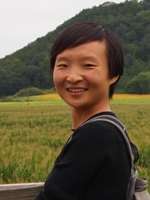 | Jing Liu
Jing is a PhD candidate in the Department of Geography, University of Wisconsin-Madison. Her research interests include digital soil mapping, machine learning and data mining applied to spatial analysis and spatial high-performance/throughput computing technologies. |
 | Brendan Malone
Brendan is a post-doctoral researcher within the Soil Security Laboratory at the University of Sydney specializing in pedometric, chemometric and digital soil mapping and assessment research. Brendan is innately passionate about soil in general, and believes sound innovations, particularly in pedometrics and digital soil mapping, can and will contribute largely to solving many of the environmental and natural resource issues we are experiencing around the world today. |
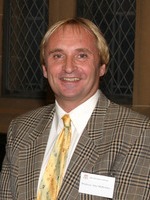 | Alex McBratney
Alex holds BSc, PhD and DSc degrees in soil science from the University of Aberdeen in Scotland, and the DScAgr degree from the University of Sydney for research in precision agriculture. He is currently Pro-Dean of the Faculty and Professor of Soil Science and Head of the Department of Environmental Sciences. He is heavily involved with the activities of the International Union of Soil Sciences and the global digital soil map project, GlobalSoilMap. Alex is passionate about the sustainable use and management of the soil system. He is trying to unravel the causes of soil change in space and time through the combination of observations and quantitative theory. |
 | Joulia Meshalkina
Joulia is working as a senior researcher on department of Agriculture and Agroecology of Soil Science faculty of Moscow Lomonosov State University (Moscow, Russia). Fields of interest are Soil science, Ecology, Data Management, Geostatistics, Precision Agriculture, Digital Soil Mapping. She is the secretary of the Pedometrics commission of Dokuchaev Soil Science Society (Russia). |
 | Cristine Morgan
Cristine is a Professor of Soil Science with emphasis in soil hydrology and pedometrics at Texas A&M University in College Station, TX. Her research program integrates graduate and undergraduate teaching that focuses on improving the ability to quantify spatially and temporally variable soil properties across watersheds, and improving our understanding of water transport processes affected by the variation of these soil properties. Her work is aiming to incorporate pedometrics and soil physics knowledge in land surface models to improve atmospheric modeling. |
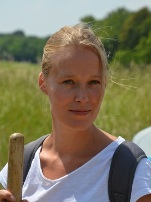 | V.L. (Titia) Mulder
Titia holds MSc degrees in Soil Science – Land Science and Geo-Information Science & Remote Sensing from Wageningen University (The Netherlands). In 2013, she obtained her PhD from Wageningen University, in close cooperation with Zürich University, with a thesis on spectroscopy-supported digital soil mapping. Titia is a post-doctoral researcher within the Infosol Unit at INRA Centre d’Orléans and received an AgreenSkills’ fellowship for performing her research. Her research interests are in large-scale modelling and mapping of natural resources, thereby integrating data mining techniques, geostatistics and remote sensing. |
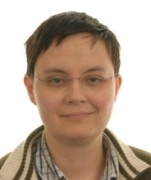 | Laura Poggio
Laura Poggio is working as a research scientist at The James Hutton Institute (Aberdeen, Scotland, UK). Her research interest focus on mapping spatio-temporal relationships between ground data and remote sensing-derived information for digital soil mapping and for integration of information on soil-climate interactions with land use and ecosystem processes. |
 | Pierre Roudier
Pierre Roudier is working as a scientist at Landcare Research - Manaaki Whenua, and is based in Palmerston North, New Zealand. His research focuses on digital soil mapping, visible near-infrared spectro scopy and wireless sensor networks for the study of soils in New Zealand and in the Dry Valleys of Antarctica. |
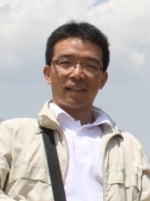 | Xiao-Lin Sun
Xiao-Lin is an Associate Professor at the School of Geography and Planning, Sun Yat-sen University. He obtained a PhD from the Institute of Soil Science, CAS and another PhD from Hong Kong Baptist University. He is interested in digital soil mapping, pedometrics, soil-landscape modelling. |
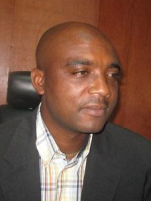 | Bertin Takoutsing
Bertin Takoutsing is a Land and Water Management Scientist at the World agroforestry Centre (ICRAF). He oversees and takes a lead role in the implementation of Land Health program and the application of Infrared spectroscopy in assessing soil quality in West and Central Africa region. Prior to joining ICRAF, Bertin Takoutsing held numerous leadership positions in development organisations and has expertise in sustainable land management. |
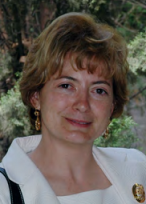 | Ana Maria Tarquis
Ana-Maria Tarquis is a Professor at E.T.S. de Ingenieros Agrónomos of Universidad Politécnica de Madrid (UPM). She is also the General Secretary of the Research Center for the Management of Agricultural and Environmental Risks. Her research interest is in time series analysis and forecasting, agro-environmental modelling, crop yield forecasting and risk related to weather and soil, and mathematical decision theory. |
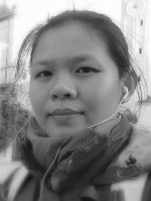 | Phuong N. Truong (Can Tho University, Vietnam)
Phuong holds a MSc degree in Geo-Information science from Wageningen University. She recently obtained her PhD from Wageningen University in June, 2014 with a thesis on incorporating expert knowledge in geostatistical inference and prediction. Her research interests are in quantitative analyses for spatio-temporal phenomena using both measurements and expert knowledge. |
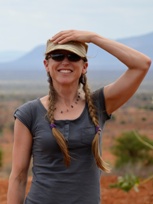 | Leigh Winowiecki
Leigh is a Soil Scientist with the International Center for Tropical Agriculture (CIAT) based in Nairobi, Kenya. Her research includes soil and landscape health monitoring and mapping, soil carbon stock assessments, including method development and most recently, linking soil health indicators with socio-economic datasets for strategic interventions in sub-Saharan Africa. Leigh is also involved in implementing global assessments of ecosystem health, including training field teams, data processing and analysis. Leigh holds a PhD in Soil Science and Tropical Agroforestry through the joint Program between the University of Idaho, Moscow, ID and CATIE. |
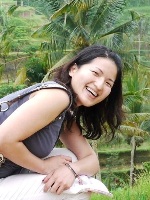 | An-Min Wu
An-Min Wu is a postdoctoral research associate in the Department of Soil, Water, and Climate at University of Minnesota – Twin Cities, USA. She received her PhD from University of Minnesota in 2014, specializing in soil pedology and soil-landscape modelling. Her research interest is to understand soil carbon and landscape changes under human influences in space and time. She enjoys field work outdoors as well as meaningful digital soil mapping and modelling. She lives in Los Angeles, California. |
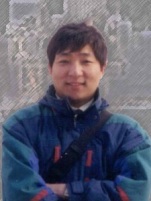 | A-Xing Zhu
A-Xing is a Professor of Geography and The Nelson Institute of Environmental Studies, Department of Geography, University of Wisconsin, Madison, USA. His research I son mapping spatial variation using "soft knowledge", watershed system science, and GIS-based environmental modelling, spatial data mining and knowledge discovery, uncertainty in GIS and its propagation through environmental models. |

